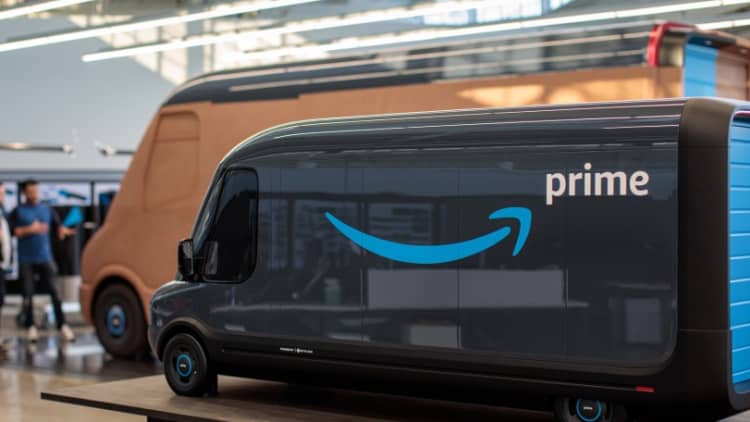Amazon is relieving some of the pressure on third-party sellers who pack and ship their own orders due to ongoing coronavirus constraints on major shipping carriers.
Last August, the company announced that, starting in February 2021, members of Amazon's Seller Fulfilled Prime program would be required to make deliveries on Saturdays and meet one- and two-day delivery targets.
In a note sent to sellers on Tuesday that was viewed by CNBC, Amazon said it was temporarily relaxing the delivery speed targets for SFP members in response to pandemic-generated "constraints on the logistics industry." It means that Amazon will give SFP members a pass if they can't ensure one- and two-day delivery speeds for a portion of shoppers.
"While we know sellers like you are working to raise the bar for Prime customers, we also understand that the pandemic has introduced constraints on the logistics industry that you depend on to meet customer expectations," according to the note. "In recognition of these constraints, we are adjusting the one- and two-day delivery speed targets."
An Amazon spokesperson confirmed to CNBC that the changes were announced to sellers on Tuesday.
The SFP program, launched in 2016, enables third-party merchants to make inventory eligible for two-day shipping and display the vaunted Prime badge on their listings without paying for Amazon's fulfillment services, Fulfillment By Amazon.
With SFP, sellers store their own products and pack their own orders, while delivery is managed by carriers such as the U.S. Postal Service, FedEx or UPS. Major carriers have experienced unprecedented strain on their systems throughout the coronavirus pandemic and the holiday shopping season as a result of elevated e-commerce activity.
On top of that, UPS and FedEx are likely to face even tighter capacity constraints in the months ahead as they prioritize shipments of millions of doses of the coronavirus vaccine.
Amazon measures an SFP member's ability to meet one- and two-day delivery targets based on how often those delivery options are shown to customers when they view a seller's product listing. As a result of the update on Tuesday, SFP members will only be required to guarantee delivery in two days or less for 55% of people who view their product listing.
Beginning in June, SFP members will be required to show delivery speeds of two days or less for 70% of people who view their product listing. Sellers will still be required to support Saturday or Sunday delivery and pickups, as well as provide nationwide delivery coverage, beginning Feb. 1.
Amazon announced the change last summer in order to give sellers plenty of time to prepare and communicate with carriers, the company said at the time. The move has garnered criticism from some third-party sellers who say it could burden their operations if they have to work on weekends.
Sellers who fulfill orders on their own had struggled to meet Amazon's two-day delivery targets, even before the coronavirus pandemic. Fewer than 16% of SFP orders in the U.S. were delivered in two days, largely because sellers don't work on weekends, Amazon said last August.



